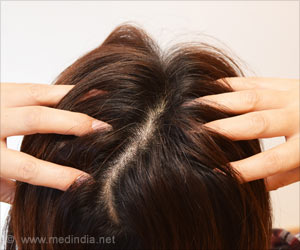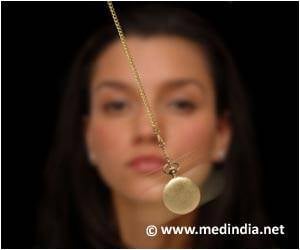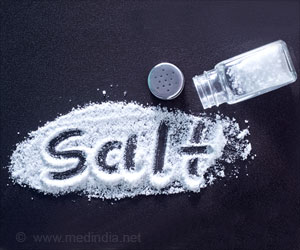Aging is often a risk factor for disease, but could aging itself be considered a disease?
- Aging causes hyperfunction of various tissues and organs
- These hyperfunctions work way beyond their requirement and damage tissues, causing diseases
- Aging is not exactly a disease but the amalgamation of all age-related diseases
Is Aging a Disease?
On one hand, aging is a progressive disease with a 100% mortality rate. It can be treated (as a disease) with drugs like rapamycin, for example. Diseases can be prevented by slowing down aging. Potential anti-aging drugs could be tested by slowing diseases. Disease or not, aging is as treatable as a disease.However, aging is not a specific disease, but the sum of all age-related diseases, including both life-limiting (e.g., diabetes, cancer and CVD) and non-life-limiting (e.g., osteoarthrosis and gray hair). It is a form of complex disease syndrome. Aging consists of all genetic alterations, age-related pre-diseases and diseases, early unrecognizable diseases that manifested as early functional decline, cosmetic conditions, and others. The aging process is the common mechanism of all diseases. Given that aging is a sum of all age-related diseases, it can be called aging syndrome, or aging.
Aging seems mysterious, if one is studying so-called “healthy” or “successful” aging. One can subtract disease after disease until nothing is left. No aging. It is like subtracting every man and woman from the American people until nothing is left. Aging behaves as the sum of all diseases. Aging is driven by the same processes as diseases. Treatments that prevent age-related diseases partially prevent aging and vice versa.
What does ‘Age is Quasi-Programmed’ Mean?
When a disease is quasi-programmed, there is a continuation of the developmental growth and reproductive program that was not switched off upon its completion. Quasi-programs are purely harmful and unintended by nature, but they are a continuation (or a byproduct) of essential programs.Like quasi-programmed diseases, aging is a natural continuation of developmental programs that were not switched off upon their completion. Aging is the sum of all quasi-programmed diseases. As David Gems put it, aging versus disease is a false contrast.
So basically, healthy aging is just slow aging, where people develop diseases later in life. Nobody dies from old age but rather from age-related diseases.
Aging and Prostate Cancer
Prostate cancer is an age-related disease. Every man would be diagnosed with prostate cancer, except that most men do not live long enough, dying from other age-related diseases. The frequency of prostate cancer detected by autopsy is 30-fold higher than mortality from prostate cancer, so that more men die with prostate cancer than because of it. The older the man, the higher frequency of autopsy-detected prostate cancer and the frequency of prostate cancer doubles every ten years.Puberty is critical for susceptibility to prostate cancer later in life. Older age at sexual maturation is linked to a decreased risk of prostate cancer later. Thus, prostate cancer would develop almost in everyone, if other causes of death did not exist.
Aging and Prostate Enlargement
Benign prostatic hyperplasia (BPH) is the most common age-related disease in men. An enlarged prostate can block the urethra, leading to an inability to urinate, and kidney damage and, if left untreated, to death. Thus, the prostate is enlarged in every aging man, and therefore it is a “normal” disease, occurring in everyone, often asymptomatic.Early in puberty, the prostate doubles in size, and its secretory function is increased to produce prostate fluid. During puberty, the prostate reaches the required size and function, but it continues to grow without purpose, becoming a disease.
Atherosclerosis is a Part of Aging
Atherosclerosis is driven by hyperfunction of numerous cell types, acting locally and distantly. Thus, activation of these cells contributes to the formation of atherosclerotic plaque. When they become hyperactive, it contributes to atherosclerosis. Atherosclerosis is associated with all other diseases of aging, especially hypertension, type II diabetes, and obesity.Atherosclerosis originates in childhood and progresses throughout life. It occurs in everyone. It is a hallmark of aging and a “normal disease”.
Is Menopause a Disease?
Some age-related diseases are so program-like that they are considered to be the norm. Menopause happens in every woman (the average age at menopause is 51, according to the North American Menopause Society), and therefore it is not commonly viewed as a disease. But atherosclerosis and prostate enlargement (and all age-related diseases) also happen in everyone.One may argue that menopause occurs too early in life compared with prostate cancer and Alzheimer’s disease, for instance, to be called disease. However, premature menopause is considered a disease. By arbitrary definition, it occurs before the age of 40 years, or two standard deviations in years before the mean menopausal age of the study population.Regulation of the menstrual cycle is very intricate and vulnerable, and hormonal hyperstimulation can disrupt the cycle. Even low doses of estradiol and progesterone are contraceptive.
Before puberty, the levels of both FSH and estrogens are low. To start the menstrual cycle, production of FSH is increased, stimulating the ovaries and estrogen production. Activation of follicles from the dormant pool serves as the source of fertilizable ova. With age, levels of FSH continuously increase, hyper-stimulating the ovaries, causing more follicles to be recruited simultaneously. Hyper-stimulation of follicle recruitment leads to follicular depletion and ovarian failure.
Thus, stimulation of FSH initiates puberty, and its continuous hyperfunction accelerates menopause.
Aging is natural. Natural process is a disease, if it leads to death or functional decline. A natural process, such as atherosclerosis, is a disease, whereas an unnatural process, such as a car accident, is not a disease. All age-related diseases are natural, and therefore we are mortal.
Source-Medindia














